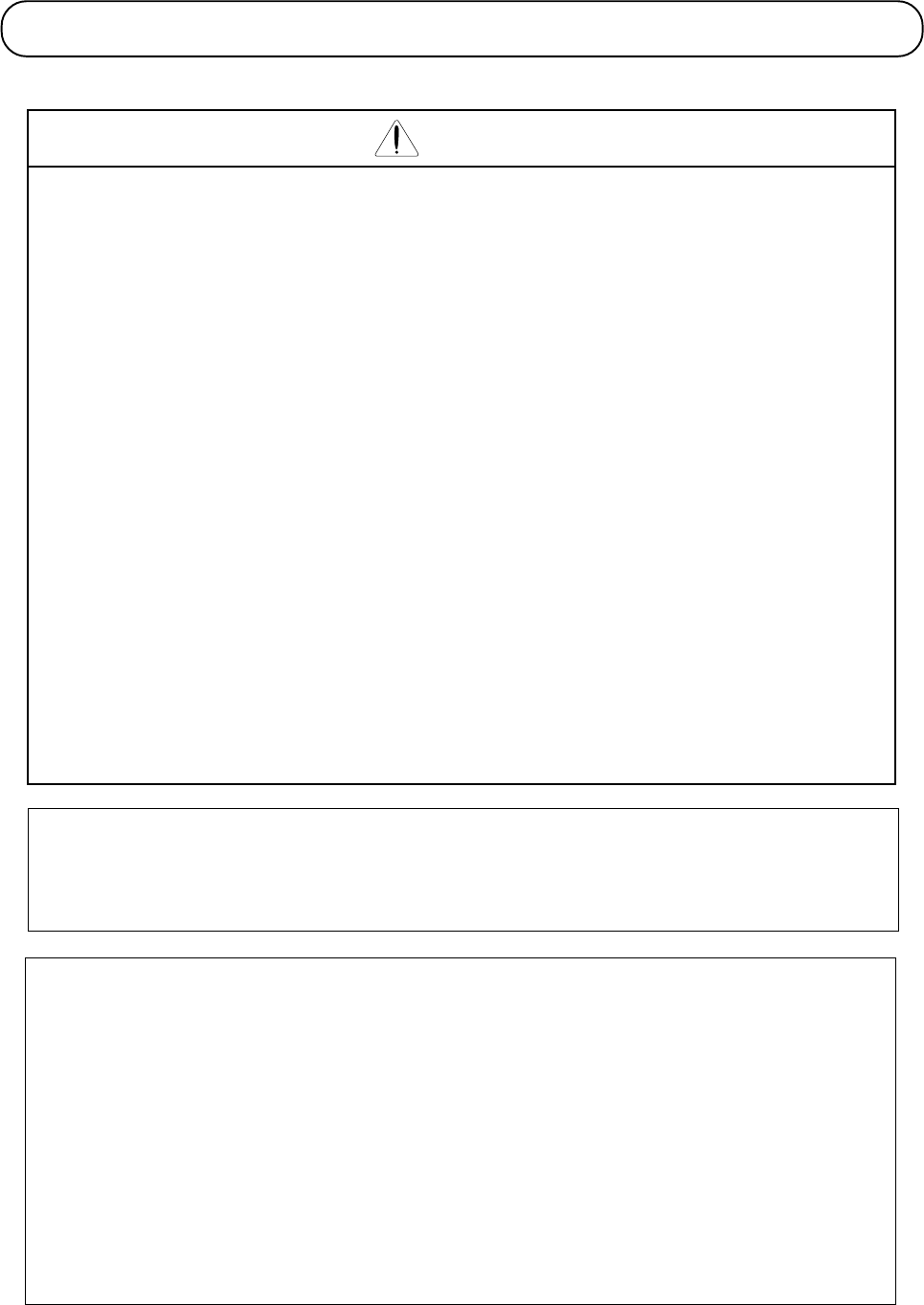
4-1
4. INSTALLATION
CAUTION
* Be sure to install the unit on flame resistant material such as metal.
Otherwise, there is a danger of fire.
* Be sure not to place anything inflammable in the vicinity.
Otherwise, there is a danger of fire.
* Be sure not to let the foreign matter enter such as cut wire refuse, spatter from welding,
iron refuse, wire, dust, etc.
Otherwise, there is a danger of fire.
* Be sure to install it in a place which can bear the weight according to the specifications
in the text (4. Installation).
Otherwise, it may fall and there is a danger of injury.
* Be sure to install the unit on a perpendicular wall which is not subject to vibration.
Otherwise, it may fall and there is a danger of injury.
* Be sure not to install and operate an inverter which is damaged or parts of which are
missing.
Otherwise, there is a danger of injury.
* Be sure to install it in a room which is not exposed to direct sunlight and is well
ventilated. Avoid environments which tend to be high in temperature, high in
humidity or to have dew condensation, as well as places with dust, corrosive gas,
explosive gas, inflammable gas, grinding-fluid mist, salt damage, etc.
Otherwise, there is a danger of fire.
NOTE : ENCLOSURE SIZE FOR 75 kW to 110kW
The inverters, 75kW to 110kW must be installed into an enclosure with dimmensions no
less than 183cm (72 in) by 183cm (72 in) by 60cm (24 in).
NOTE : ENCLOSURE SIZE FOR 132 kW AND BIGGER
The inverters, 132kW and bigger, are complied as recognizedcomponents.
Therse devices are intended for use in an overall ecclosure with an internal ambient of
40 degree C for variable torque rating or 50 degree C for constant torque rating maximum.
End product temperature testing should be conducted to verify sufficient forced air ventilation
is provided to maintain this ambient in room ambient of 10-40 degree C.
Based upon component level testing , end product temperature testing may be conducted at
any convenient room ambient in the rangeof 20-40 dwgree C, unless the room ambient in the
intended application exceeds 40degree C, in which case testing should be conducted at the
elevated ambient.
Enclosure internal ambient temperature should be measured above the drive on to the upper
left or right side. Temperature measurments on the drive itself should not be necessary.


















